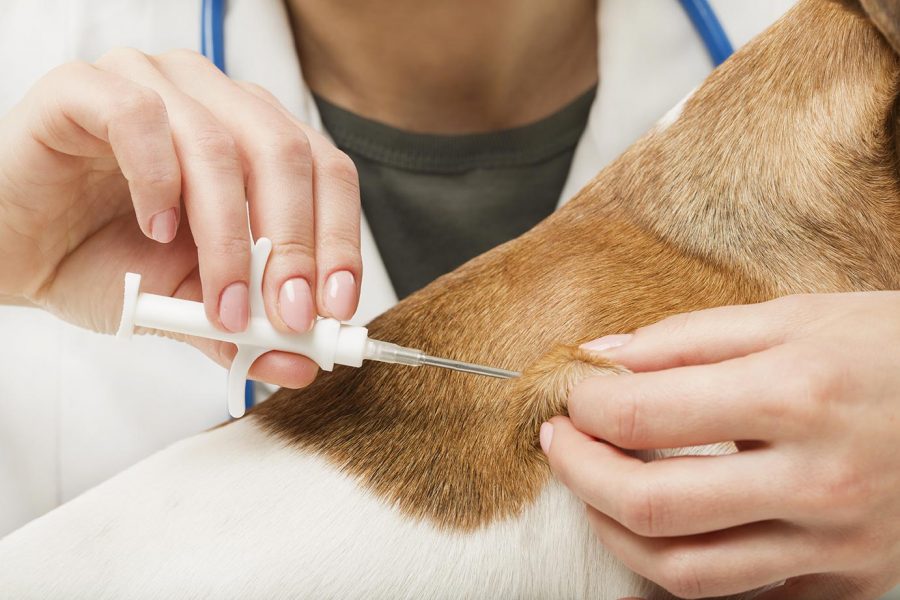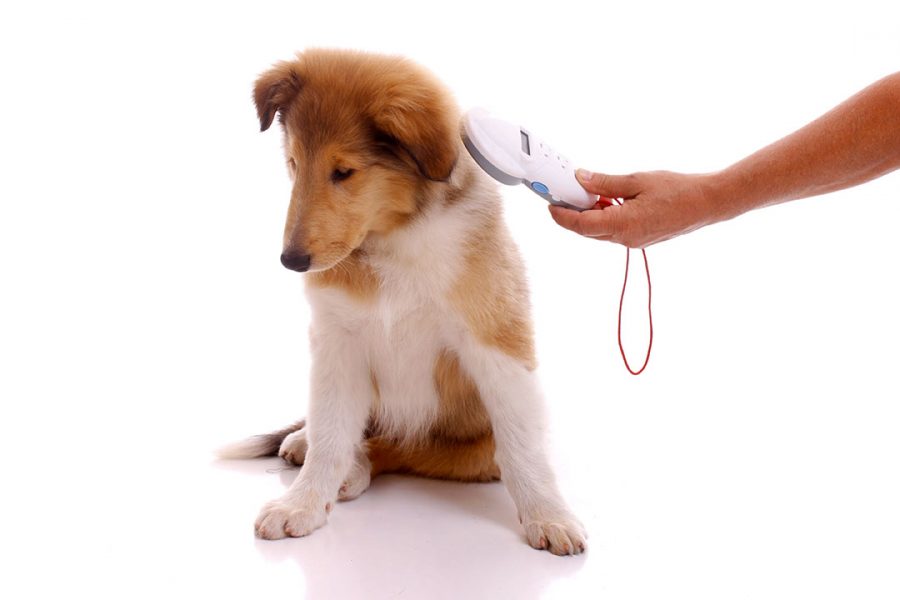A microchip is a small electronic device, measuring only a few millimetres, that the veterinarian applies to the dog in the neck region, either on the left- or right-hand side, with using a simple subcutaneous needle.

How does the microchip work?
Without emitting electromagnetic radiation, it passively allows the identification of the animal. In Italy it the dog’s details can be found in in the database of the regional canine registry where the microchip is registered, through a unique 15-digit alphanumeric code that is detectable by a special scanner.
How do you register a dog in its regional canine registry?
In Italy the registration of the dog in the database of the registry of companion animals, made available by the Italian Ministry of Health (ATS), can only be carried out by freelance veterinarians accredited by the ATS, or by those who work at the ATS itself, by entering the microchip number, the identification data of the animal and the owner’s data. In Italy, the application of the microchip is mandatory for dogs since 2005 and replaces the old tattoo method.
Does the dog’s microchip have GPS? Is it possible to locate a dog through its microchip?
No, the dog is not trackable through the microchip, because this is not equipped with a GPS positioning system. In fact, in order to contain the GPS, the dog’s microchip should be significantly larger than a few millimetres. It would thus be more difficult to apply and, certainly, much more uncomfortable for the animal.

A micro GPS for dogs, therefore, does not exist and the microchip is not a subcutaneous locator but a painless and certified method which allows only to quickly identify the owner, in case the is dog lost.
For this reason, it is really important to combine the mandatory microchip with a GPS / Bluetooth / Wi-fi satellite locator with worldwide coverage, such as Kippy Evo, which is also easily applicable to the dog’s collar or harness, so as to always have under control the position of your pet!
Federica Pirrone, Mariangela Albertini, Patrizia Piotti researchers at UNIMI Veterinaria
